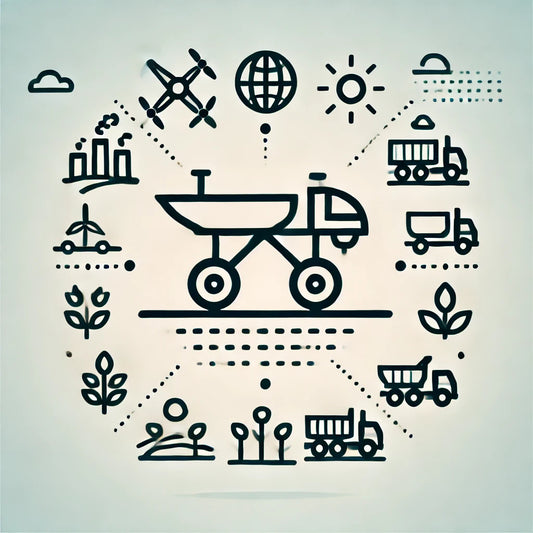-
DESCRIPTION
-
TABLE OF CONTENTS
-
SAMPLE PAGE
-
SAMPLE DOSSIER
Last-mile deliveries are paramount in the contemporary logistics and supply chain management landscape. Last-mile delivery, constituting the final leg of the product's journey from the distribution center to the end consumer, presents a critical logistical challenge marked by intricacies inherent to urban environments.
The surge in e-commerce heightened consumer expectations for swift and precise deliveries, and the ever-expanding global urbanization necessitated reevaluating traditional delivery methodologies.
Consequently, the integration of Commercial Unmanned Ground Vehicles (UGVs) emerges as a transformative solution poised to redefine the efficiency and efficacy of last-mile deliveries.
Chapter I. Introduction 5
A. Background and Significance of Last-Mile Deliveries 7
B. Definition and Overview of Commercial Unmanned Ground Vehicles (UGVs) 8
C. Purpose and Scope of the Report: 10
Chapter II. Current Challenges in Last-Mile Deliveries 11
A. Limitations of Traditional Delivery Methods 13
B. Complexities of Urban Environments and Traffic Congestion 14
C. Labor Shortages and Rising Delivery Demands 16
D. Environmental Impact and Sustainability Concerns 18
Chapter III. Technological Advancements in UGVs 20
A. Evolution of UGVs in Last-Mile Deliveries 26
B. Sensor Technologies for Navigation and Obstacle Avoidance 28
C. Artificial Intelligence and Machine Learning Applications 30
D. Communication Systems and Connectivity Advancements 32
Chapter IV. Enhanced Autonomy in UGVs 33
A. Levels of Autonomy in UGVs and Their Implications 38
B. Sensor Fusion and Perception Capabilities 40
C. Decision-Making Algorithms for Route Optimization 43
D. Safety Mechanisms and Collision Avoidance Systems 44
Chapter V. Specialized UGVs for Last-Mile Deliveries 47
A. Tailored Designs for Specific Delivery Purposes 50
B. UGVs for Perishable Goods, Fragile Items, and Oversized Packages 51
C. Integration of Robotics and Automation Technologies 53
D. Considerations for Customization and Scalability 55
Chapter VI. Collaboration between UGVs and Human Workers 57
A. Hybrid Models of UGV-Human Driver Partnerships 59
B. Optimizing Human-UGV Coordination and Communication 61
C. Implications for Job Roles and Workforce Management 64
D. Training and Skill Development for Human Workers 66
Chapter VII. Safety and Security Considerations 69
A. Ensuring UGV Compliance with Safety Regulations 73
B. Authentication and Anti-Theft Measures for Secure Deliveries 74
C. Cybersecurity and Protection Against Potential Vulnerabilities 76
D. Liability and Insurance Implications in UGV Deployments 78
Chapter VIII. Regulatory Frameworks and Policy Development 80
A. Current Regulations for UGVs in Last-Mile Deliveries 83
C. Ethical and Privacy Considerations in UGV Operations 86
D. Future Regulatory Challenges and Potential Solutions 88
Chapter IX. Infrastructure Requirements and Integration 91
A. Infrastructure Development for UGV Operations 94
B. Charging and Maintenance Stations for UGV Fleets 97
C. Integration with Existing Transportation Networks and Logistics Systems 102
D. Urban Planning Considerations for UGV-Friendly Environments 107
Chapter X. Conclusion and Future Outlook 112
A. Recap of Key Findings and Implications 115
B. Predictions for the Future of UGVs in Last-Mile Deliveries 118
C. Opportunities and Challenges for Stakeholders 121
D. Recommendations for Industry Players, Policymakers, and Researchers 127
Noted and Resources 129





